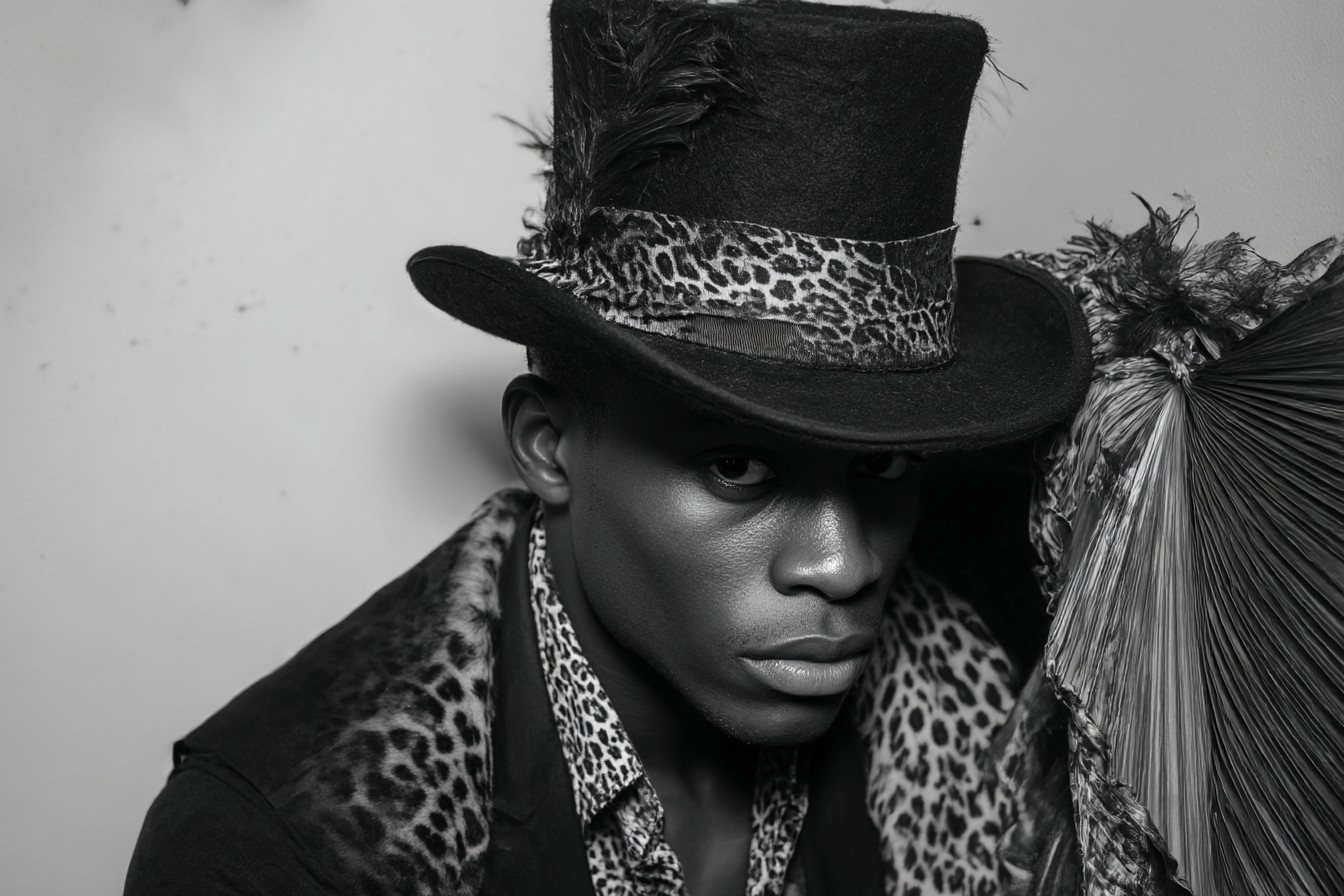The first time I realized vintage clothes were sometimes better than new ones, I was 19 and had just found a 1960s Pendleton wool shirt at a Salvation Army in Chicago for $4.75. The fabric was substantially thicker than anything Pendleton was making at the time, the mother-of-pearl buttons had developed a beautiful patina, and despite being at least 40 years old, it was in better condition than most new shirts I owned. When I mentioned my find to my grandfather, he just nodded and said, “Things were built differently back then.” An obvious statement, sure, but one that’s stuck with me through two decades of thrift store hunting.
There’s this weird paradox in modern menswear where we’re constantly being sold expensive “heritage-inspired” pieces that attempt to recreate the quality and character of vintage items—usually at eye-watering prices—while the actual vintage originals gather dust in thrift stores across America for one-tenth the price. As someone who’s spent way too many Saturday afternoons digging through racks at Goodwill and church basement sales (my girlfriend has instituted a “one afternoon per weekend” limit on my thrifting), I’ve developed a mental catalog of specific vintage items that consistently outperform their modern equivalents.
I’m not talking about obvious collectibles like vintage Levi’s 501s from the ’50s or perfectly preserved Ivy League suits from the ’60s—those have been picked over by dealers for decades and rarely surface in regular thrift stores anymore. I’m talking about the overlooked gems, the pieces most people walk right past because they don’t have the right brand name or don’t fit current trends. These are the items I’ve found to offer exceptional quality-to-price ratios and genuine character that’s impossible to replicate in new production.

Let’s start with the low-hanging fruit: military surplus. While dedicated vintage stores charge premium prices for perfect M-65 field jackets and N-1 deck jackets, more common military items regularly turn up in thrift stores at bargain prices. I’ve found multiple USA-made military-issue khaki chinos from the ’80s and ’90s for under $10 that are constructed to withstand literal warfare. The fabric is substantial without being uncomfortable, the stitching is bombproof, and they develop a natural patina that looks better than any artificially distressed pants on the market.
Military sweaters might be the single best value in all of thrifting. Navy or Army-issue wool sweaters from the ’70s through ’90s often turn up priced between $5-15 yet are made to specifications that would cost $200+ to reproduce today. I have an olive drab wool crewneck from 1982 that cost me $6 in a Michigan thrift store; Aimé Leon Dore would probably charge $385 for a reproduction of similar quality. Look for tags from manufacturers like Laurel, Sturdi-Knit, and Vermont Tubbs, and check for the military contract number usually printed inside.
Moving beyond military gear, one of my consistent best finds has been American-made wool shirts and CPO jackets from the ’60s through ’80s. Brands like Woolrich, Pendleton, and LL Bean made incredibly sturdy wool shirts and shirt jackets during this period, often using fabric weights that would be considered prohibitively expensive today. Modern versions typically use thinner wool, fewer plies of yarn, and overseas manufacturing. Meanwhile, the originals regularly turn up in thrift stores priced between $10-20.
What makes these vintage wool shirts special isn’t just the fabric weight—it’s the construction. Look for chain-stitched hems, bar-tacked stress points, and double-needle seams that have already survived 40+ years of wear. Modern reproductions simply don’t justify the handwork these older pieces received as standard procedure. The fit is typically more generous than modern slim shirts, but a good tailor can adjust the side seams for about $25 if needed, still leaving you with a better shirt at a lower total cost than new “heritage” versions.
Leather jackets are admittedly harder to find, but when they do turn up, vintage American-made leathers offer incredible value. Brands like Schott are well-known and priced accordingly even when used, but makers like Cooper, Berman, Foxrun, and Golden Bear produced excellent jackets that now sell for a fraction of their quality level. I found a 1970s Golden Bear varsity jacket with a melton wool body and horsehide sleeves for $35 at a church sale in Queens—a jacket that would cost well over $700 to make today.

The key with leather is knowing what to look for. Vintage horsehide and goatskin have distinctive grains that are difficult to fake. Cowhide from the mid-century was typically thicker and more substantial than what’s used in all but the most expensive modern jackets. Even if the leather has dried somewhat, basic conditioning with a quality product like Saphir Renovateur can restore most vintage leathers to suppleness. Zippers are a tell—look for Talon or early YKK zippers with the distinctive oval pull tab for legitimate vintage pieces.
One category that’s surprisingly overlooked: American-made dress shirts from the ’60s through early ’90s. While most people chase casual vintage pieces, I’ve found incredible Oxford cloth and broadcloth shirts from makers like Sero, Troy Guild, Gant, and Eagle for as little as $3-4. The Oxford cloth used in mid-century shirts was typically heartier than modern equivalents, and details like single-needle stitching (18-22 stitches per inch), gussetted construction, and unfused collars and cuffs make them technically superior to most new shirts under $150.
The catch with vintage dress shirts is sizing—they often followed a different sizing convention, and many were designed to shrink to fit after purchase. I typically look for shirts marked 1-2 sizes larger than I’d wear today, particularly if they’re unwashed deadstock. The collars are usually longer and fuller than modern slim-collar shirts, but that classic proportional look has aged much better than the skinny collars that dominated the 2010s.
Perhaps my favorite thrift category is knitwear, particularly American-made cotton and wool sweaters from the ’70s through ’90s. Unlike many vintage items that require searching for obscure manufacturers, some of the best vintage knitwear came from mainstream brands that are easy to spot. LL Bean’s Norwegian birdseye sweaters from the ’80s are rightfully legendary, but even their basic cotton cable knits from that era used significantly better yarn and denser knitting than current production.
Brooks Brothers cotton sweaters from before their manufacturing exodus offer similar quality advantages over current versions. The cotton has a distinctive dense hand-feel that comes from using thicker yarn and more compact knitting—something that’s prohibitively expensive to reproduce today. These regularly turn up for $5-10 in thrift stores where buyers often overlook them in favor of trendier labels.

The sleeper hit of vintage thrift finds might be American-made camp moccasins and boat shoes from the ’80s and early ’90s. Early Timberland and Sebago models used substantially thicker leather than current versions, and the construction was genuinely meant for decades of resoling rather than a few seasons of wear. I’ve found multiple pairs of made-in-Maine Sebago and Dexter boat shoes for under $15 that, after a basic cleaning and conditioning, look and perform better than new pairs at five times the price.
Even mundane items like belts offer surprising vintage value. American-made leather belts from the ’70s through ’90s typically used full-grain leather of a thickness rarely seen in modern belts outside the highest price ranges. Coach, Dooney & Bourke, and even department store brands produced simple bridle leather belts that have aged beautifully and still have decades of life left in them. These regularly turn up for $3-5 and often just need a quick cleaning to remove surface dirt.
For those willing to venture into slightly more eccentric territory, vintage golf clothes offer extraordinary quality. Sansabelt trousers from the ’70s and ’80s were made to extraordinarily high standards—the waistbands genuinely don’t stretch out, the fabrics have a dense, substantial hand, and the construction is impeccable. Yes, some have wild patterns, but many came in solid navy, grey, and tan that can be worn like any other trousers. I’ve found dozens of pairs with original tags still attached, suggesting many were purchased but rarely if ever worn.
The true thrift store unicorn might be vintage American-made pajamas and robes from brands like Pleetway and Botany 500. These used remarkably high-quality cotton, real shell buttons, and piping that was actually sewn, not glued. A good vintage cotton robe can last another 30 years with proper care, whereas most new ones barely survive a dozen washes before the fabric starts disintegrating.
The thrift landscape has undeniably changed with the rise of online resellers and vintage dealers who scout local shops. Certain categories—like vintage denim and collectible sportswear—have been largely picked clean from general thrift stores in major cities. But surprisingly many high-quality vintage pieces still fly under the radar, especially in smaller towns and suburbs where recognizable luxury logos tend to get more attention than understated quality.

My best recent finds have come from thrift stores in smaller communities during work trips—places where vintage dealers don’t have the volume to justify regular visits. A Woolrich mackinaw coat from the ’60s for $12 in a small Michigan town. A deadstock Viyella flannel shirt for $7 at a church sale in Vermont. A pristine 1980s Coach briefcase for $25 at a Goodwill in suburban Virginia.
The genuine thrill of thrift hunting isn’t just the bargain—it’s finding pieces that literally cannot be purchased new at any price because the materials, construction methods, or labor models that created them no longer exist in modern manufacturing. There’s a perverse pleasure in wearing a $4 thrifted shirt that’s objectively better-made than anything at Barneys.
Of course, there are trade-offs. Vintage hunting requires time, patience, and a willingness to walk away empty-handed from most trips. Sizes can be challenging, particularly for taller or broader guys, as American physiques have changed substantially over the decades. And even the best finds often need cleaning, minor repairs, or alterations to work in a contemporary wardrobe.
But for those willing to put in the effort, America’s thrift stores still contain an extraordinary archive of craftsmanship and quality—hiding in plain sight between the discarded fast fashion and novelty coffee mugs. The next time someone compliments my “new” Pendleton shirt, I’ll just smile and not mention that it’s been keeping people warm since the Kennedy administration—and will probably still be doing its job long after most of today’s “premium” menswear has disintegrated.



